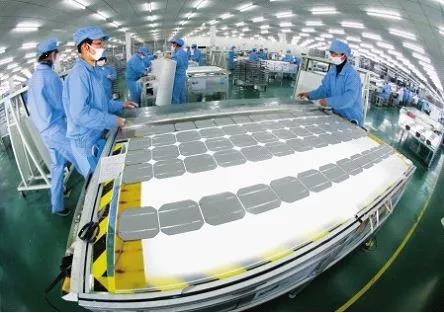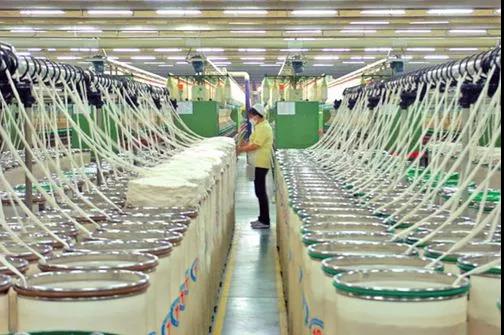
By Edward Tse | China Daily Europe | Updated: 2018-03-09
Despite roadblocks ahead, there will be more opportunities for startups involving Chinese and outbound entrepreneurs
After the peak in 2016, China’s outbound direct investment in 2017 slowed significantly and recorded its first annual drop since 2006. According to the Ministry of Commerce, China’s total outbound direct investment in nonfinancial sectors declined by 29.4 percent year-on-year to $120 billion (97.5 billion euros; £87 billion) in 2017. However, if we take the last five years’ data (from 2012) and take out the 2016 data, the cumulative annual growth rate is actually around 10 percent.
2016 was probably an aberration, as there was a rush by a number of Chinese companies to invest feverishly overseas, causing concern for the Chinese government about the abnormal outflow of capital from China.
Since late 2016, the Chinese government has exercised more stringent controls on capital outflow, and it appears that undisciplined overseas investment is now largely under control.
So what do we expect to see in terms of China’s outbound investments in 2018, in particular as it relates to its two important trading partners and investment destinations: North America and Europe?
Two recent failed deals involving Chinese companies investing in the United States made headlines. US telecom company AT&T walked away from a deal with Huawei, a Chinese telecom equipment and smart device maker, under pressure from the US Congress.

Source: Baidu.com
The US government also rejected the intended acquisition of MoneyGram, a US money transfer company, by Ant Financial, an affiliate of Chinese internet giant Alibaba. Media have reported that on Capitol Hill, there is a prevailing wind of “trust deficit” regarding the US-China relationship on trade and investment.
Similarly, China’s investments in Europe have encountered obstacles from the European Union. Last year, the German government adopted stricter regulations on non-EU countries’ investment in German companies, especially in such crucial areas as energy, infrastructure and high-tech. Also, a few months ago, the European Union launched a probe into China’s high-speed train project from Belgrade to Budapest, alleging that Chinese companies won public contracts without open bidding.
Deals triggering “national security” concerns from the US and EU governments’ standpoint will always raise red flags, and with regard to Chinese companies’ investment, the theory goes like this: The Chinese government is behind everything that Chinese businesses are doing, and State-owned enterprises, because of their government ownership, act on behalf of the Chinese government. By implication, they have motives that are not trustworthy. In addition, the Chinese government employs strong industrial policies that create an unlevel playing field for companies and countries, according to the theory.
I can’t say these arguments are completely fiction. However, this is certainly not the complete picture.
While the State sector is certainly prevalent in China, the non-State sector is actually becoming more important and powerful in its own right. By 2016, approximately 56 percent of China’s total outbound investment in nonfinancial sectors was made by non-State owned companies, compared with only 19 percent a decade ago. Additionally, according to Chinese government statistics, the non-State industrial sector’s revenue in 2016 was close to four times that of the State sector. About the same ratio also applies to total profit.

Source: Baidu.com
Based on a study by the Institute of Population and Labor Economics at the Chinese Academy of Social Sciences, China’s new economy – internet-based businesses ranging from e-commerce to car-hailing services – grew twice as quickly as China’s overall GDP in the past 10 years to 2016. By definition, these new economy companies are mostly, if not entirely, private-sector companies. Entrepreneurship and business innovation are thriving in China, and they come mostly from the private sector.
The Chinese government has applied tighter supervision on Chinese companies’ outbound investment to prevent irrational investments, such as in the areas of real estate, hotels and entertainment.
However, the government continues to encourage Chinese companies to “go abroad”, as long as the reason is considered legitimate. One area in which the Chinese government is particularly supportive of Chinese companies’ participation is the Belt and Road Initiative. Although nonfinancial sector outbound investment slumped by 29 percent in 2017, investment in Belt and Road countries increased by 3.5 percent year-on-year to $14.3 billion, accounting for 12 percent of total outbound investment.
To many Chinese companies, the US and Europe are attractive (and in some cases necessary) markets, and the conditions for manufacturing are becoming more favorable. China’s direct investment in North America has grown at a cumulative annual growth rate of 25.8 percent over the past five years.
For example, Triangle, China’s third-largest tire manufacturer, is going to invest in a $580 million plant in North Carolina this year. Keer Group, a Chinese textile producer, plans to invest $218 million over the next five years to expand the capacity of its facility in South Carolina. Additionally, it has been reported that China’s investment in Germany reached a peak in 2017.

Source: Baidu.com
Recently, Huawei confirmed its long-term commitment in the United Kingdom with a 3 billion euro ($3.7 billion; £2.7 billion) investment. Also, China launched a 3 billion yuan investment fund, backed by State-owned asset manager Shanghai International Group, during British Prime Minister Theresa May’s recent visit to Shanghai. The fund will invest in European manufacturing companies in the medical, chemical and environmental protection sectors, helping Chinese companies to upgrade their manufacturing capabilities.
As China’s innovation and entrepreneurship continue to thrive, there will certainly be more opportunities for startups involving both Chinese and outbound entrepreneurs (especially in the US), as well as for venture capitalists. Technology, especially AI, will increasingly be embraced for enabling innovations by entrepreneurs.
In the past five years, China’s outbound direct investment has grown rapidly in technological industries such as information communication, software and information service (with a cumulative annual growth rate of 53.9 percent). Both the US and China are now leading the world in the development and application of AI, and this trend will likely continue to accelerate.
The interactions between China and the US at the startup and investors’ levels are actually taking place intensively, as there is so much to share and many opportunities to jointly pursue. Much of this has already manifested in cross-border investments between the two countries.
However, roadblocks exist in cross-border trade and investments. The US government has introduced policies to restrict China’s investment in some areas of high-tech, especially when it is viewed as potentially infringing on US national security. It was reported that three key European countries – Germany, France and Italy – have drafted a legal initiative for more rigor in investigating and restricting investments from China.
It would be naive to expect plain sailing for the China-US and China-Europe trade and investment relationship this year. However, I don’t believe all will be bad, either. There will be areas of tension and differences in points of view and policies, but there will also be areas of collaboration and alignment.
“Coopetition” is perhaps the best way to describe the nature of China’s relationship with the US and Europe going forward. After all, it won’t be – and shouldn’t be – a zerosum game, especially not in today’s world of increasing connectivity.
Edward Tse is founder and CEO of Gao Feng Advisory Company, a global strategy and management consulting firm with roots in Greater China, and author of China’s Disruptors.

